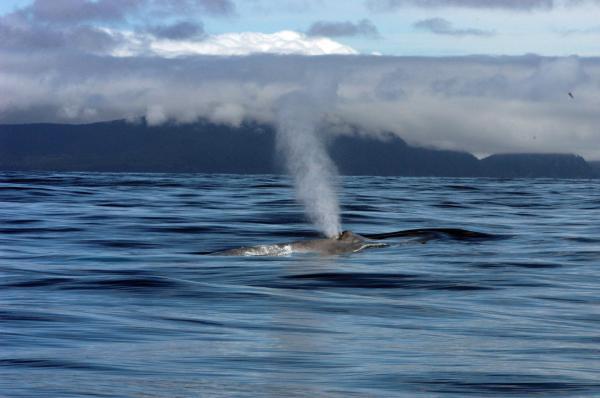Blue whale re-establish historical migration patterns
The largest animal on the planet may be returning to the breeding area before whaling. Researchers have documented the first migration of blue whales from the California coast to British Columbia and Alaska Bay areas since commercial whale hunting ended in 1965.
In the scientific journal Marine Mammal Science, researchers at the Cascadia Research Institute in Washington state, NOAA's Southwest Fisheries Science Center in California, and Canada's Department of Fisheries and Oceans discovered 15 schools. Different combinations are blue whales off British Columbia and Alaska Bay. Four of these whales have been identified as having appeared on the California coast, suggesting that they are re-establishing their migration history.
The researchers produced this identity by comparing photographs of blue whales in the northern Pacific since 1997 with nearly 2,000 other blue whale shots on the west coast of West Coast. The comparison is based on the types of pigments on skin color and dorsal shape.

A blue whale is spraying water at Moresby Island, British Columbia, Canada.(Photo: John Calambokidis, Cascadia Research Collective)
The blue elephants were severely reduced during the period of commercial whaling during the early 1990s in the North Pacific, and along the west coast to Baja California.
Previous large blue whales in the North Pacific could never recover until the commercial whaling activity ended, and poor fish off the coast of southern California could be found. safer place to live. The researchers are still not sure why the blue whale began migrating from southern California to the northern Pacific, although changes in marine conditions could push their essential food source to krill. go further north.
The blue whale is said to be the largest animal on the planet that ever existed, reaching nearly 100 feet in length. They are almost hunted to extinction around the world and are now on the list of threatened species under the US Endangered Species Act, and they are also listed on the Red List of the Conservation Society. international natural defense. An estimated 5,000 to 12,000 blue whales are alive today, with the largest in about 2000 individuals on the west coast of the United States.
References:
John Calambokidis, Jay Barlow, John KB Ford, Todd E. Chandler, Annie B. Douglas.Ảnh Insights into cấu hình cơ sở của blue whales trong Đông Bắc Pacific từ gần đây và ảnhic identification.Marine Mammal Science, 2009;DOI: 10.1111 / j.1748-7692.2009.00298.x
- Blue whale reappears
- Heartbreaking image of the death of blue whale
- Video: Blue whale wearing the whole boat jutting out of the water
- Whales used to be assassins that hunted sharp teeth like lions
- Use military technology to track green whales
- The blue whale's tongue is even heavier than an elephant
- 'Challenge the blue whale' - why is it only because of a game that someone is willing to commit suicide?
- Close up of the largest 170 ton blue whale on the planet
- Whales know how to sing
- Disaster turns blue whale into the largest creature on the planet
- How is the secret of feeding a whale?
- Close up of the heart
 Animal 'suffering' after hibernation
Animal 'suffering' after hibernation Why do goats climb well?
Why do goats climb well? Scientists were surprised to see chimpanzees eating turtles
Scientists were surprised to see chimpanzees eating turtles Giant catfish died deadly due to drought in Thailand
Giant catfish died deadly due to drought in Thailand